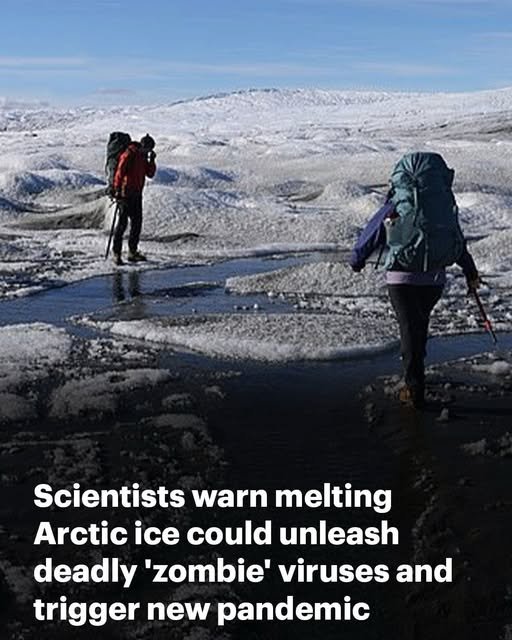Since Covid-19 brought the world to a standstill back in 2020, thoughts have turned to what the next global pandemic could be.
Many scientists are focusing their research on a hypothetical future ‘Disease X’.
But according to a new study, the answer could actually lie in the Arctic.
Scientists have warned that melting ice at the North Pole could unleash ‘zombie’ viruses with the potential to trigger a new pandemic.
These so-called ‘Methuselah microbes’ can remain dormant in the soil and the bodies of frozen animals for tens of thousands of years.
But as the climate warms and the permafrost thaws, scientists are now concerned that ancient diseases might infect humans.
Co-author Dr Khaled Abass, of the University of Sharjah, says: ‘Climate change is not only melting ice—it’s melting the barriers between ecosystems, animals, and people.
‘Permafrost thawing could even release ancient bacteria or viruses that have been frozen for thousands of years.’
Melting ice and thawing permafrost in the Arctic could release a deadly ‘zombie virus’ and start the next pandemic, scientists have warned. Pictured: Scientists walk over the thawing Greenland icecap
So-called ‘Methuselah microbes’ can remain dormant in the soil and the bodies of frozen animals for tens of thousands of years. Scientists have managed to revive some of these ancient diseases in the lab, including this Pithovirus sibericum that was isolated from a 30,000-year-old sample of permafrost
Glaciers can also store huge numbers of frozen viruses. As scientists predict that the world’s glaciers will vanish by 2100, there are concerns that these ancient pathogens could be released
For over a decade, scientists known that bacteria and viruses frozen in the Arctic could still have the potential to infect living organisms.
In 2014, scientists isolated viruses from the Siberian permafrost and showed they could still infect living cells despite being frozen for thousands of years.
Similarly, in 2023, scientists successfully revived an amoeba virus that had been frozen for 48,500 years.
However, the risks are not limited to permafrost regions, as dormant pathogens can also be found in large bodies of ice such as glaciers.
Last year, scientists found 1,700 ancient viruses lurking deep inside a glacier in western China, most of which have never been seen before.
The viruses date back as far as 41,000 years and have survived three major shifts from cold to warm climates.
While these viruses are safe so long as they remain buried in the permafrost, the big concern for climate scientists is that they may not remain that way for long.
When ice or permafrost is disturbed or melts, any microbes inside are released into the environment – many of which could be dangerous.



